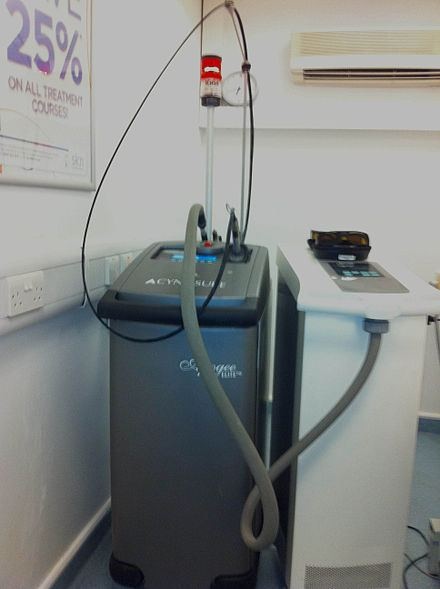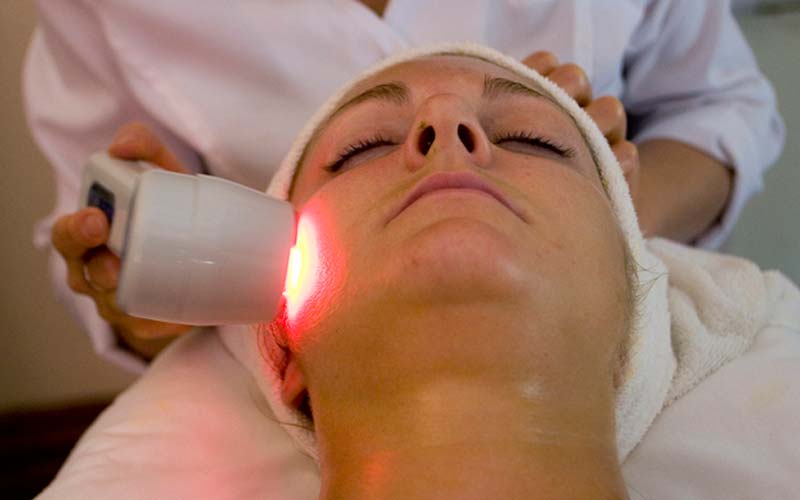Skin Rejuvenation
Photofacial is a more generalized term used for skin treatment using a technology that employs light. This method can be used for different purposes like treating brown spots, boosting collagen, treating the broken capillaries etc.
IPL can be used for treating conditions like facial redness, brown spots, brown capillaries and stimulating collagen production. The number of sittings needed shall depend upon the condition to be treated.
Laser Peeling
Another name of this method is laser re-surfacing. In such a method, a focused beam of light of sufficient energy is employed to remove the top skin layers. Deeper penetration can also be performed according to the individual requirement.
From Laser resurfacing is a treatment to reduce facial wrinkles and skin irregularities, such as blemishes or acne scars. The technique directs short, concentrated pulsating beams of light at irregular skin, precisely removing skin layer by layer. This popular procedure is also called lasabrasion, laser peel, or laser vaporization.
Usually, fractional carbon dioxide laser is used for this purpose. However, other lasers like Er:YAG lasers etc can also be used depending upon the individual requirement.
Laser Hair Reduction
Hair is something that adds to the beauty of an individual. For example, long hair in women is generally considered to be one of the most desired characteristics. Moustaches in men are also regarded as the symbol of masculinity, particularly in the east. Contradicting to these aspects, growth of hair in unwanted parts of the body can negatively affect the beauty of the individual. For this, several methods may be adopted for the removal of hair from different parts of the body. Laser hair reduction is one of the most effective methods that is being used nowadays. The dermatologist community has established the effectiveness of laser in this treatment. The main principle that is behind such a therapy is selective photothermolysis (SPTL). In such a process, a pulse of sufficient width and wavelength is employed to eradicate the selected areas. The main advantage of this method is the accuracy of hair removal. Also, this can be done in a very short time.
Laser Tattoo Removal
Tattoo has become very popular in USA and European countries. Recently tattoo is becoming very popular in India at a very faster rate. But at least 50 % of the people who had tattoos on their skin want to remove them. It is good news that the tattoos can be removed now with latest laser technology with minimal side effects. For tattoo removal, high density laser beam is applied in a controlled manner over the area where the tattoo to be removed is located. Black pigment in the tattoo absorbs all the laser wave length. So removing black tattoos are easier. Color pigments absorb laser beams of specific wave lengths only. For removing color pigments in a tattoo, laser beams of the corresponding have to be applied. Based on the above technique the treatment program is tailored to suit the individual needs of each candidate. In the past tattoos were removed by crude methods. But in most cases, the scars left after the above procedures were more unsightly than the tattoo itself. Candidates who have undergone treatment for tattoo removal and for those who have tried out rude home remedies are also suitable candidates for laser tattoo removal provided they do not have excessive scars on their body.

The procedure starts with placing an eye shield on the face of the candidate. After this skins reaction to laser beam is tested to find out the energy level of the laser beam to be applied. Now a hand piece is placed on the surface of the tattoo and the laser beam is activated. The candidate may feel the laser beam pulses as a snapping of rubber band against the skin. Smaller tattoos need lesser pulses where as larger tattoos require more pulses. In any case tattoo removal requires many visits. After each visit the tattoo becomes lighter and lighter. After completing each day’s procedure ice pack is applied over the area to soothe the area. An antibiotic cream or ointment will be given for applying over the area. No form of anesthesia is required in this procedure. But depending upon the pain threshold of the patient and the area of the tattoo the doctor may use topical anesthesia or pain killer injections to make the procedure easier.
